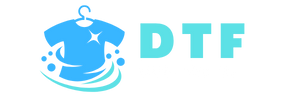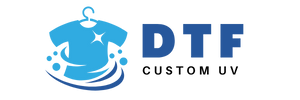DTF gangsheet builder is transforming how designers plan multi-design transfers, delivering precise color coordination and faster production. It helps optimize color layout for DTF printing, ensuring each design sits correctly on a single sheet without sacrificing detail. By aligning color channels, ink coverage, and separation data, the DTF gangsheet builder supports smoother workflows and improves DTF gang sheet optimization, while boosting DTF printing color accuracy. This tool lets teams experiment with layout templates and gang sheets design templates to maximize space and minimize waste. Whether you’re new to DTF or refining a high-volume workflow, mastering color optimization for heat transfer through structured planning pays off in consistency and vibrancy.
In this second look, the concept is described with alternative terms that echo the same idea, focusing on how a multi-design transfer layout tool coordinates artwork across a single gang sheet. A sheet optimizer for DTF ensures color balance, reliable registration, and consistent results across batches by managing color channels and separations behind the scenes. When teams discuss color management, ICC profiles, and design templates, it becomes clear how studio workflows benefit from reduced setup times and wasted material. Adopting a print-ready layout approach helps keep edge-to-edge details intact and ensures the integrity of each design from proof to final transfer.
DTF Gangsheet Builder: Mastering Color Layout and Color Accuracy
The DTF gangsheet builder is designed to manage complex color layouts across multiple designs on a single transfer sheet. By mapping each artwork’s color channels and integrating embedded ICC profiles, you can preserve hue, saturation, and brightness from design to garment. This directly supports the color layout for DTF printing and enhances DTF printing color accuracy when running batches.
To maximize fidelity, operate in a color-managed workflow and use the builder’s virtual proof tools to simulate the final output. Planning the white underbase, color overlays, and channel order reduces color shifts and banding on the final fabric, supporting color optimization for heat transfer and consistent results across garments. Additionally, using gang sheets design templates helps standardize spacing, margins, and alignment across projects.
Assign colors and separation data thoughtfully, grouping similar colors to minimize ink switching and risk of misregistration. Run calibration prints and compare to the design reference to catch issues early, ensuring the DTF gangsheet builder delivers reliable, repeatable results in real-world production.
DTF Gang Sheet Optimization: Templates, Layouts, and Color Optimization for Heat Transfer
DTF Gang Sheet Optimization starts with strong design templates and a deliberate layout. Using gang sheets design templates helps you place designs with safe margins and predictable ink coverage, enabling true DTF gang sheet optimization across a run. This approach keeps color relationships consistent and reduces the risk of misregistration between designs.
Plan color balance across the sheet so adjacent designs don’t pull the eye toward a single temperature. Color layout decisions influence color optimization for heat transfer, ensuring vibrant, accurate results after curing. Continually monitor with a robust preview and verification step to catch drift before printing full batches.
Document the exact settings used for each template, save verified layouts, and maintain a versioning system so future runs can reuse proven configurations. This practice supports consistent DTF printing color accuracy and makes long runs more predictable.
Frequently Asked Questions
How does the DTF gangsheet builder improve color layout for DTF printing and ensure DTF printing color accuracy across designs?
The DTF gangsheet builder lets you map each design’s color channels and white underbase on a single gangsheet, then run virtual proofs and apply printer ICC profiles. This workflow minimizes color shifts and misregistration, preserves hue and brightness across designs, and reduces waste while delivering consistent DTF printing color accuracy.
What role do gang sheets design templates play in a DTF gangsheet builder workflow for color optimization for heat transfer and production efficiency?
Gang sheets design templates standardize layout, margins, and color grouping, speeding up layout planning and reducing waste. They support color optimization for heat transfer by keeping color balance consistent across designs, enabling smoother DTF gang sheet optimization and more efficient production.
| Key Point | Summary |
|---|---|
| What is a DTF gangsheet? | A gangsheet is a single sheet containing multiple designs printed together to maximize transfer sheet space while preserving color fidelity and detail. |
| Why color layout accuracy matters | Color layout accuracy affects hue, saturation, and brightness across designs and prevents problems like banding, color shifts, or dull hues when printing multiple designs on one sheet. |
| Define project scope | List all designs, total colors, finishes, and approximate ink coverage to guide efficient, color-faithful layout planning. |
| Prepare artwork with proper color management | Use embedded ICC profiles, work in a neutral CMYK space, and map color data to the correct channels in the DTF gangsheet builder. |
| Plan gangsheet layout | Arrange designs to minimize waste, maintain safe margins, balance color temperature, and consider the order of ink layers to optimize opacity. |
| Assign color channels and separation data | Allocate designs to color channels, designate white underbase and black for contrast, and determine overlays for predictable transfer results. |
| Simulate and verify layout accuracy | Run virtual proofs to compare expected output with original art and identify issues like color clashes or crowding before printing. |
| Print a test run and calibrate | Print a small test sheet to verify color accuracy, ghosting, and white underbase effectiveness; adjust profiles or spacing as needed. |
| Produce the final gangsheet | Print the full gangsheet, monitor color consistency and alignment, and document settings for future batches. |
| Techniques for color optimization and layout accuracy | Use printer-specific ICC profiles, group designs by color families, manage white ink placement, balance color, use templates, and include verification steps. |
| Common pitfalls and troubleshooting | Misalignment/registration issues, ink bleed, color shifts after curing, and inconsistent results; address with calibration, spacing tweaks, and profiles. |
| Real-world tips | Begin with a test palette, share proofs with clients, version your layouts, and train staff on color management. |
| Case study highlights | A four-design run consolidated onto one sheet reduced waste by 18% and setup time by 30%, delivering consistent color accuracy. |
| Best practices and quick tips | Embed color profiles, maintain a dedicated color-management workflow, document SOPs, keep testing logs, and invest in templates and preview tools. |


